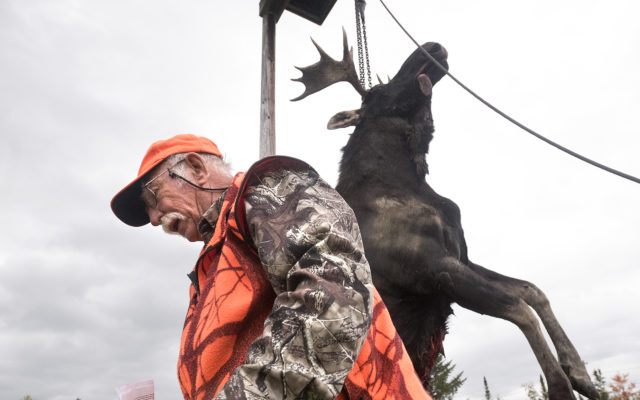
Favorable conditions led to high hunter success in October moose season
Maine’s moose hunters who headed out during the second six-day season, which was staged in mid-October, reversed the trend seen by September hunters, with about 75 percent filling their tags.
According to the Maine Department of Inland Fisheries and Wildlife’s online harvest tracking page, 966 of 1,280 hunters during the Oct. 14 to 19 season were successful. That 75.5 percent success rate was far better than the 65.9 percent rate of hunters in September, when warm conditions made moose tougher to find.
An especially balmy Monday set the tone for that first week, and hunters tagged only 46 moose on that season’s opening day.
Overall, 71.6 percent of hunters during those first two seasons ended up filling their tags. Another season is ongoing right now, with 650 hunters targeting cow moose in six northern Wildlife Management Districts.
“With moose in particular, [success] goes back to effort, and what hunters are doing on the ground, and the role that weather plays,” state moose biologist Lee Kantar said. “[The first] October [hunt] was a pretty good week weather-wise, with cooler nights, which gives you some opportunity in the morning. And there were no big storm events or anything like that to change the game.”
The results from the first October week push the overall success rate back into the normal range for Maine’s moose hunt, in which more than 70 percent of hunters typically fill their tags. Only twice in the past 10 years (2014, 65 percent; and 2011, 66 percent) has the rate dropped below 70. The high-water mark in terms of recent hunter success came in 2012, when 78 percent of hunters filled their tags.
Some hunters swear that there’s been a decrease in the number of moose on the landscape, and Kantar said those observations are true.
“They’re seeing less moose because there are less moose,” Kantar said.
But that decrease is intentional, and is a result of management decisions made to make the moose herd less susceptible to health woes caused by winter ticks.
“The fact is the health of the herd has everything to do with the amount of disease that’s out there, particularly dealing with winter tick and [moose calf survival], and the fact is that we’re just not as productive as we were in the 1980s when the moose population was growing,” Kantar said.
Those 1980s moose did not have to deal with winter ticks at the level they do now, he said.
Kantar said that allowing the harvest of cow moose during November aids biologists scientifically, as hunters are required to turn in the moose’s ovaries at the tagging station. That, in turn, lets biologists get a better look at the potential productivity of a region’s female moose.
To those who think the state should stop issuing so many moose permits, Kantar said the state has always been conservative when deciding how many permits to sell each year.
“It’s not hunting mortality that has [reduced the moose population]. People get tired of hearing it, but [the causes are] winter tick and climate change,” he said.
When the cow-only hunt concludes a half hour after sunset on Saturday, only a few permits will remain for a monthlong hunt set for November.
That hunt gives 40 participants a shot at moose in two more southerly districts, where moose are more scarce. The hunt lasts from Nov. 4 to Nov. 30, including Nov. 2 for Maine residents.